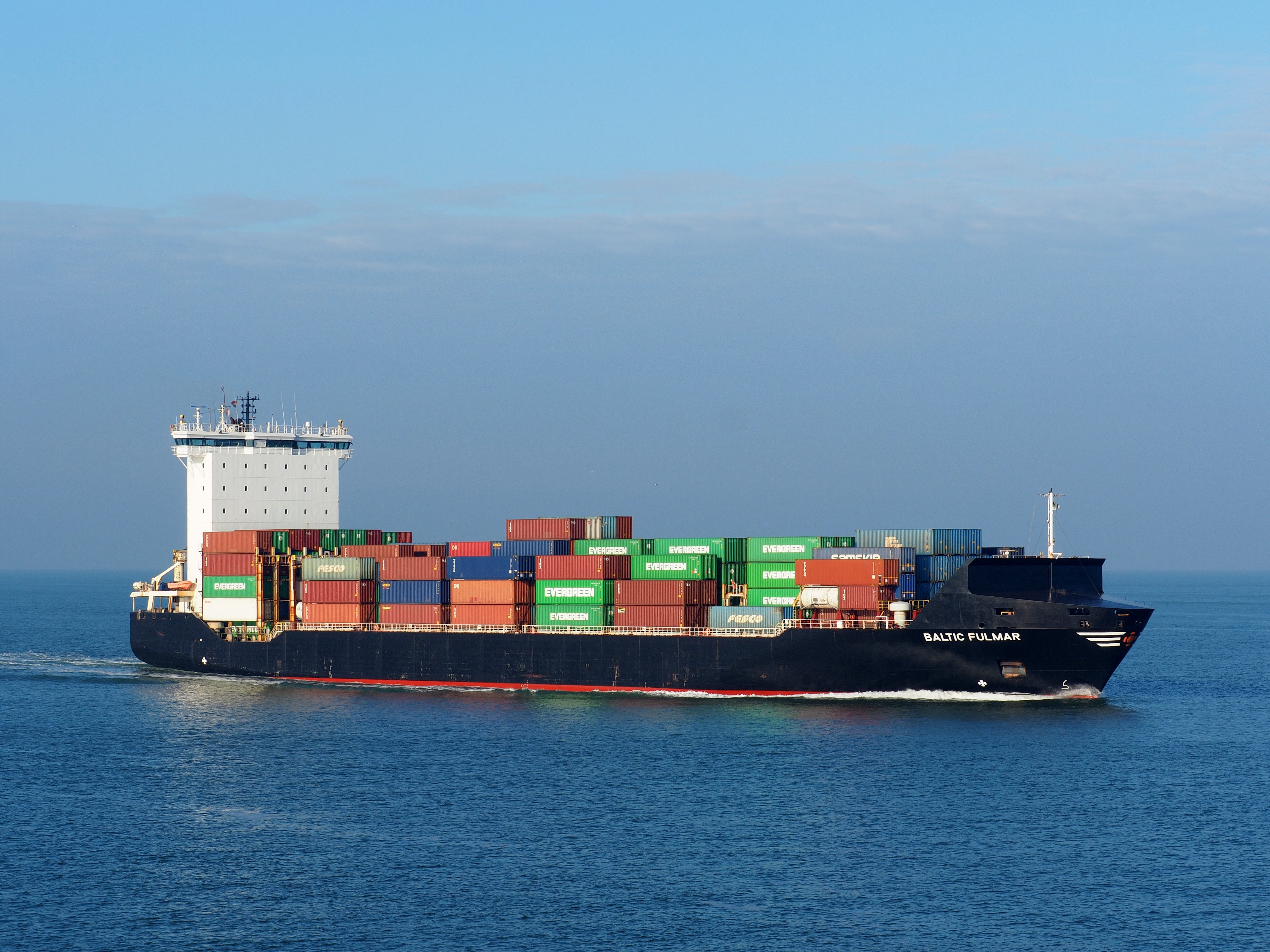
Damage to Undersea Cables in Baltic Hint at China – Russia Collusion
By Dodge Billingsley

The Baltic Fulmar was sold to a Chinese shipowner in 2023 and renamed the NewNew Polar Bear. The NewNew Polar Bear is suspected of severing undersea cables in the Baltics.
“Investigators suspect that a Chinese vessel is the perpetrator of the incident. The incident was sharply reacted to by German Defense Minister Boris Pistorius, who said that it ‘is not an accidental accident, but a deliberate sabotage.”
On 19 November, the Danish Navy detained the Chinese-flagged bulk carrier Yi Pang 3 under the suspicion that it had damaged undersea cables connecting Finland and Germany and cables connection Sweden and Lithuania. As per the first excerpted article in the Polish defense publication Defense24, the Yi Pang 3 had sailed from the Russian port of Ust-Lugu before passing through the Baltic Sea. German Defence Minister Boris Pistorius called the incident deliberate sabotage but did not delineate a responsible party. According to the second excerpted article from the Indian publication The Week, Russia may be the culprit, given that the Yi Pang 3 was captained by a Russian. Additional western sources point to Russia as well.[i] However, the incident is the second involving a Chinese-flagged ship damaging undersea cables in the Baltic.[ii] It also comes on the heels of Western efforts to isolate China from the undersea cable network in the Indo-Pacific and suspicion of Chinese hacking into existing undersea cables in the region.[iii] Two months prior, in September 2024, Chinese officials excoriated the U.S. and its allies’ efforts to control the global undersea cable network.[iv]
It is highly probable that both Russia and China are complicit in the acts of sabotage against critical Western infrastructure. Both China and Russia have a shared interest in degrading Western capabilities: China’s confrontations with the West regarding Taiwan and the South China Sea and Russia’s confrontations with the West over control of Ukraine. Both China and Russia have recently engaged in hybrid or non-lethal forms of warfare, leading multiple Western leaders to suspect and accuse them of sabotage.
Sources:
“Danish Navy Stopped Chinese Ship Suspected of Damaging Undersea Cables,” Defense24 (Polish based security focused news outlet), 20 November 2024. https://defence24.com/armed-forces/danish-navy-stopped-a-chinese-ship-suspected-of-damaging-undersea-cables?utm_source=archives.internationalintrigue.io&utm_medium=newsletter&utm_campaign=tense-moments-at-this-year-s-g20&_bhlid=0108ca30f9c9a3a247f66f2e0da3ce1af250d1cd
The detention took place in the area of Danish territorial waters, in the Danish Straits at the exit of the Great Belt. The detention of the vessel was carried out by the Danish Navy patrol vessel P525. After a few hours, another vessel HDMS Soeloeven, which is specialised for underwater work, reached both vessels. The detention of the vessel occurred on the evening of 19 November.
There is no information on whether there was an inspection of the vessel by the Danish MW’s boarding group. The Chinese vessel was sailing from the Russian port of Ust-Luga.
There is no official announcement from the Danish authorities as yet either, but the Chinese bulk carrier is suspected of damaging telecommunications cables lying on the bottom of the Baltic Sea. The vessel was said to have sailed over the damaged cables between Finland and Germany, the so- called C-Lion1, and between cables connecting Sweden and Lithuania.
Investigators suspect that a Chinese vessel is the perpetrator of the incident. The incident was sharply reacted to by German Defence Minister Boris Pistorius, who said that it “is not an accidental accident, but a deliberate sabotage.”
This is not the first time that a Chinese naval vessel has been responsible for damaging strategic infrastructure in the Baltic. In October 2023, the Balticconenctor gas pipeline connecting Estonia and Finland was unsealed. The gas pipeline was damaged by an anchor dropped from the deck of the Chinese container ship NewNew Polar Bear. The vessel was suspected of being the perpetrator of that incident from the outset, but it was not decided to detain it and it escaped from the Baltic Sea without consequences.
Source: “Not Russia? Chinese cargo vessel “Yi Peng 3” likely behind the sabotage of undersea cables in Baltic,” The Week (India based news service), 21 November 2024. https://www.theweek.in/news/world/2024/11/21/not-russia-chinese-cargo-yi-peng-3-likely-behind-the-sabotage-of-undersea-cables-in-baltic.html
A Chinese cargo vessel ‘Yi Peng 3’ is said to be “of interest” in connection with the alleged sabotage of two undersea communication cables in the Baltic Sea. The ship is said to have passed two cables on Sunday and Monday around the same time they were found to be severed, said reports.
Though there is no official confirmation in this regard, the Danish Navy is said to have detained the Chinese-registered cargo ship, allegedly helmed by a Russian captain. The detention allegedly took place inside the Danish territorial waters by the Danish Navy patrol vessel P525. Soon another vessel HDMS Soeloeven, which specialises in underwater work, joined the P525.
However, it is not clear whether the Danish Navy officials boarded the Chinese vessel which was said to be sailing from the Russian port of Ust-Luga.
Besides Denmark, Sweden too is taking an active interest in the ship. Sweden’s National Operative Department said it is “part of the sphere of interest, but there may be more.”
As per the data by Vesselfinder tracking data, Yi Peng 3’s last port visit was on November 15 in Ust-Luga in western Russia, close to the border with Estonia.
It stopped overnight on Tuesday to Wednesday in the Kattegat strait between Denmark and Sweden. The ship was then said to be moving along a strange route and stopped overnight on Tuesday to Wednesday in the Kattegat strait between Denmark and Sweden.
The ship was travelling 78 km at an average speed of 10.4 km/h and the transponder, which relays the data of the ship, at the time was inactive. Though the vessel’s AIS data shows that it circled just off Bornholm for about an hour, this is attributed to strong winds at that time and in that region.
However, Russian maritime pilot Alexander Stechentsev, who boarded the ship to guide it out of port, told The Guardian that there “was nothing unusual about the vessel.” He added that he took the ship to a receiving buoy located 11 miles offshore before disembarking.This isn’t the first that a Chinese vessel is destroying an underwater asset in the Baltic Sea. In 2022, the Chinese container vessel, the ‘NewNew Polar Bear’ had damaged a gas pipeline after its anchor dragged it across the seabed. China acknowledged the incident but claimed that the vessel accidentally damaged the pipeline due to stormy conditions that were prevailing at the time.
Notes:
[i] The view that Russia is behind the sabotage is also supported by at least one article in the U.S press. See: “Chinese-Registered Ship Is Held in Baltic Sea Sabotage Investigation,” The Wall Street Journal, 20 November 2024. https://www.wsj.com/world/europe/chinese-registered-ship-is-held-in-baltic-sea-sabotage-investigation-27929472
[ii] In October 2023 the Chinese flagged NewNew Polar Bear cut an undersea pipeline and communications cable in the Baltic. That ship was also piloted by a Russian crew and escaped the area without being detained. China eventually said the NewNew Polar Bear had indeed damaged the critical undersea infrastructure but noted it was an accident. For an Australian perspective see: Cynthia Mehboob, “Commentary: Beijing’s Baltic confession exposes undersea vulnerability,” Channel News Asia (Singapore-based news service), 15 August 2024. https://www.channelnewsasia.com/commentary/china-ship-pipeline-accident-sabotage-damage-undersea-cable-europe-asia-4545766
[iii] For background information on the recent undersea cable dispute with China, see: Dodge Billingsley, “China Creating Undersea Cable Network In Response To United States Isolation Efforts, OE Watch, 07-2024. https://fmso.tradoc.army.mil/2024/china-creating-undersea-cable-network-in-response-to-united-states-isolation-efforts/; and Dodge Billingsley, “Potential Flashpoint Stemming From Undersea Cable Network Access Restrictions,” OE Watch, 06-2024. https://fmso.tradoc.army.mil/2024/potential-flashpoint-stemming-from-undersea-data-cable-network-access-restrictions/
[iv] “US politicization of undersea cables opposed,” Global Times (English language newspaper under the auspices of the Chinese Communist Party’s flagship newspaper, the People’s Daily), 24 September 2024. https://www.globaltimes.cn/page/202409/1320312.shtml
Image Information:
Image: The Baltic Fulmar was sold to a Chinese shipowner in 2023 and renamed the NewNew Polar Bear. The NewNew Polar Bear is suspected of severing undersea cables in the Baltics.
Source: https://en.wikipedia.org/wiki/Newnew_Polar_Bear – /media/File:Baltic_Fulmar_(ship,_2005)_IMO_9313204,_Maasmond,_Port_of_Rotterdam_pic4.JPG
Attribution: Public Domain
Distribution A: Approved for public release
Categories:
Tags:
Related Products
Chinese Military Exercises Highlight Improvements in Joint Operations
North Korean Media Stays Quiet Despite Global Concerns






